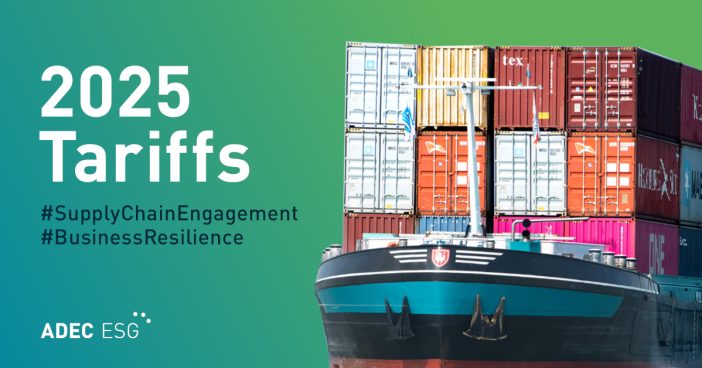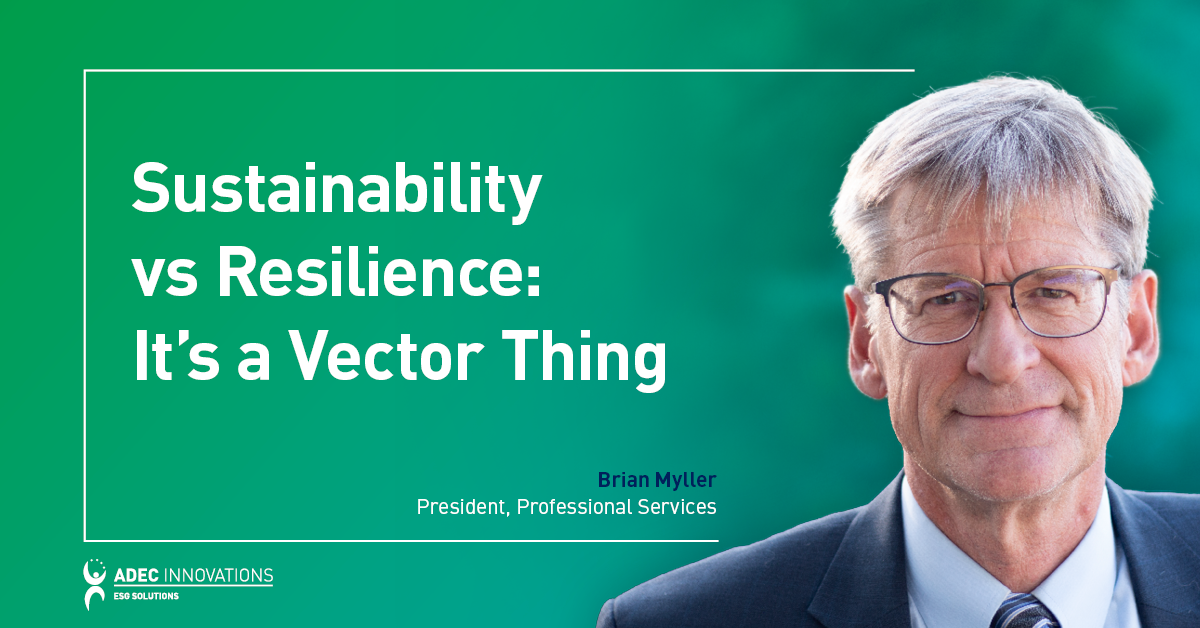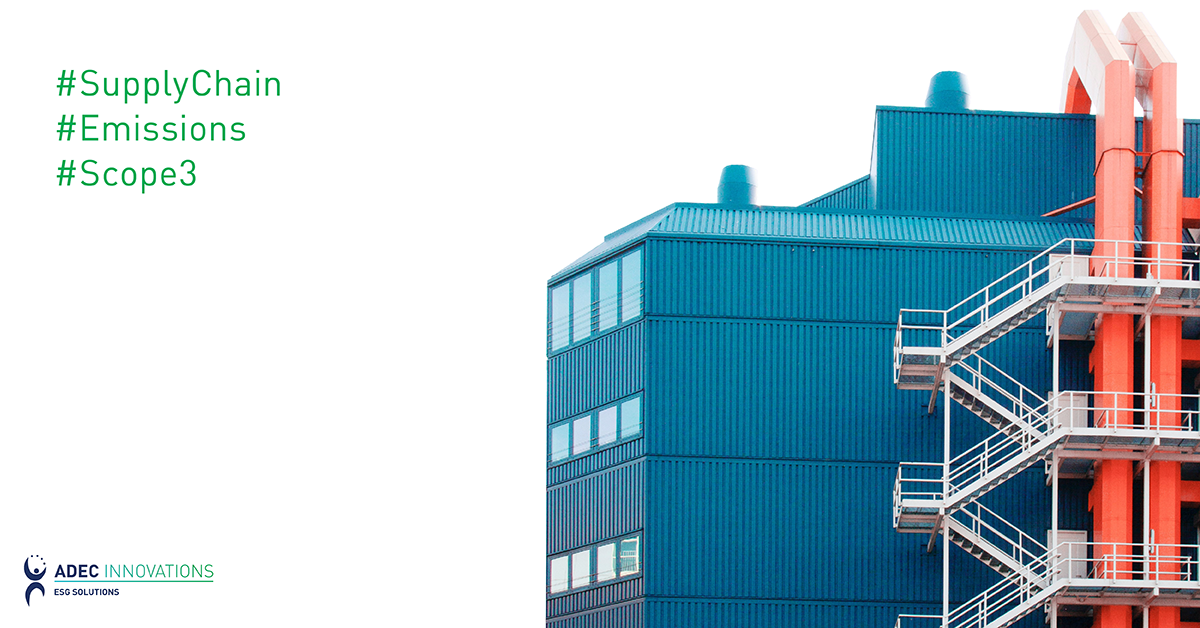In early April 2025, the U.S. government introduced sweeping changes to its trade policy, citing economic concerns and national competitiveness. A new 10% baseline tariff was imposed on all U.S. imports, alongside a wave of targeted tariffs on specific countries—including China—that have since been subject to rapid escalation, reversals, and continued uncertainty. In response, some major trading partners have introduced (and in some cases reversed) retaliatory measures, ranging from new tariffs on US goods to tightened export controls on critical raw materials like rare earth elements.
While much of the public focus has been on the economic and political fallout, the implications for sustainability are just beginning to unfold. For ESG, procurement, and supply chain leaders, these tariffs are more than a cost line—they’re reshaping sourcing strategies, straining climate targets, and testing what it means to build a resilient, sustainable supply chain in 2025.
The Tariff Ripple Effect: Costs, carbon, and complexity
Tariffs today are more than just trade policy; they’re shaping the sustainability trajectories of global companies. As supply chain and procurement teams adjust sourcing strategies and cost structures, sustainability leaders are left to assess the fallout. Rising transportation emissions, strained supplier relationships, and new compliance hurdles are already surfacing, with ripple effects across sustainability priorities:
Carbon footprint creep
Many companies have made significant progress in reducing transportation emissions and improving traceability by nearshoring or diversifying their supplier base. The recent imposition of tariffs introduces new financial pressures that may compel companies to reconsider these strategies. There is a risk that, in seeking to mitigate increased costs, companies might revert to longer, more carbon-intensive supply routes. Such shifts could potentially undermine previous emissions reductions, particularly in scope 3 emissions, and jeopardize public climate commitments if not carefully managed.
Supplier stability
Small and medium-sized suppliers, especially in emerging markets, often play a key role in corporate social responsibility and supplier diversity initiatives. Unfortunately, these suppliers tend to be less resilient to tariff shocks. As companies gravitate toward high-volume suppliers that can absorb cost increases, commitments to inclusion and equitable sourcing may quietly fall by the wayside.
Renewable inputs and circular materials
Tariffs on batteries, recycled materials, and rare earth inputs are already creating friction in green supply chains. China’s retaliatory restrictions on key rare earth elements like samarium and gadolinium, both of which are critical for magnets in wind turbines, electric vehicles, and advanced electronics, are further tightening availability. These disruptions have a disproportionate impact on companies with aggressive net-zero and circularity targets.
Compliance meets chaos
Companies working to meet climate and sustainability disclosures, such as the EU’s Corporate Sustainability Reporting Directive (CSRD) or emissions targets validated by the Science Based Targets initiative (SBTi), may find their efforts disrupted. New logistics pathways and rapid supplier changes can lead to data gaps, inconsistent emissions tracking, and audit complications. For many, this introduces new hurdles in scope 3 calculations, third-party assurance, and overall disclosure readiness.
Procurement in a pinch: What to watch
Procurement professionals are suddenly back in crisis mode, reprioritizing speed, resilience, and cost. But sustainability can’t be sacrificed in the name of agility. As your company begins to reassess sourcing strategies, keep in mind some key watchpoints:
- Tier 2 and Tier 3 Blind Spots: Most companies have good visibility into Tier 1, but shifting costs and risk upstream can amplify sustainability issues where you least expect them. Traceability beyond the first tier is now mission-critical.
- Trade Routes & Emissions Trade-Offs: That lower-cost shipping route might come with a much higher carbon price tag. Companies reporting to CDP or disclosing in line with ISSB standards will need to track changes and justify emissions increases.
- Cost of ESG Commitments: Sustainable procurement teams need to collaborate closely with finance to build businesses cases for sticking with green-aligned suppliers—even if they now cost more. Scenario analysis and total cost of ownership models can help make the case.
- Supplier Behavior Under Pressure: Tariff-related margin squeezes may lead some suppliers to cut corners on labor practices, environmental compliance, or quality standards. Strengthening supplier oversight and conducting targeted due diligence can help avoid reputational risk and regulatory non-compliance.
- Increased Risk of Greenhushing: As costs rise, companies may feel pressure to quietly pause or de-emphasize ESG-related commitments, especially in supply chains. But ESG stakeholders and raters are watching. Pulling back without disclosure may do more harm than acknowledging a temporary setback with a clear path forward.
Turning insight into action
The challenges are real—but so are opportunities to respond with clarity and foresight.
Spotting the risks is just the first step—what companies do next is what really counts. With trade pressures mounting and sustainability targets still on the clock, it’s time to shift from reactive to proactive strategy.
Here’s how ESG and procurement teams can work together to keep supply chains sustainable, resilient, and ready for whatever comes next:
- Revisit Materiality in Real Time: Update your materiality assessment to reflect new cost and regulatory pressures introduced by the tariff environment. What was high-priority last year may have shifted.
- Integrate Trade Risk into Sustainable Strategy: Trade disruption is now a top ESG risk. Treat it as such. Integrate tariff scenarios into climate risk planning and supply chain disclosures to ensure you’re prepared for all possibilities.
- Expand Supplier Due Diligence: Update your supplier assessments to include tariff risk exposure. Keep a close eye on which suppliers may be passing cost increases through, cutting labor standards, or backing off emissions targets to stay afloat.
- Lean on Local Where It Matters: Strengthen domestic and regional supply networks for critical materials or components. Consider co-investing in local suppliers or building strategic inventory buffers.
- Position for Future Advocacy: The current political climate may not favor sustainability carveouts, but that won’t last forever. Businesses can lay the groundwork now by tracking the impact of trade disruption on clean tech, critical minerals, and recycled materials, so they’re ready to engage when the policy window reopens. Quiet preparation today makes for sharper advocacy tomorrow.
As organizations take stock of what’s within their control, one thing is abundantly clear: this moment is a stress test not just for supply chains, but for sustainability commitments.
Looking ahead: Sustainability isn’t an optional line item
The latest wave of tariffs has added pressure across global supply chains and their ripple effects are landing squarely in the real world, forcing companies to reassess strategies, supplier relationships, and long-term commitments. For those with established sustainability goals, this isn’t a pause—it’s a recalibration.
The path forward demands more than quick fixes. It calls for creative problem solving, tighter cross-functional collaboration, and a renewed focus on long-term priorities. Now’s the time to pressure-test your strategy, shore up your data, and show that resilience is more than a talking point.
ADEC ESG works with global companies to strengthen supply chain sustainability and build business resilience in a constantly changing world. Talk to our team to learn more about how we can help your organization implement effective strategies that align with your sustainability goals—from supply chain engagement and metrics monitoring to climate risk assessments and strategy implementation.
This blog provides general information and does not constitute the rendering of legal, economic, business, or other professional services or advice. Consult with your advisors regarding the applicability of this content to your specific circumstances.




